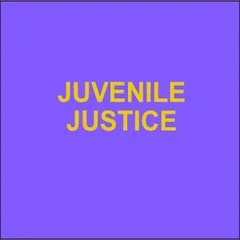By Raul Armenta
Despite accounting for 12 percent of the U.S. population, young adults ages 18 to 24 accounted for nearly 20 percent of the people arrested for all causes in the United States in 2019, and have a higher probability of being reincarcerated than older age groups when they leave jail or prison.1 California is a microcosm of these larger incarceration trends, with young adults overrepresented in its criminal legal system and likely to be reincarcerated after being released.2 In Los Angeles (LA) County, approximately 9,000 young people have been referred to probation, with a disproportionate number of Black and Latino young people affected compared with their White peers.3 Significant evidence indicates that young adults have not yet reached a state of full neurological and cognitive maturity, shaping their decision-making.4 This fact may partly explain their overrepresentation in the legal system. Yet these young people are routi nely processed by the same courts as older adults, overlooking their level of neurocognitive development―that is, their thinking and reasoning skills―and the extent to which they are able to make well-informed decisions. Additionally, young people’s involvement in the criminal legal system often leads to their growing distrust of the system when they perceive court outcomes as unfair.5 Various programs aim to reduce the involvement of young adults in the criminal legal system. These programs take into account the implications of standard court processes outlined above for young people as they attempt to implement the latest understanding of cognitive behavioral treatment, which asserts that helping young people change patterns of thoughts and emotions can support desired changes in behavior. Young people tend to respond pos the population they serve, including past involvement in the criminal legal system—who understand and respond appropriately to their different values, attitudes, and beliefs. Credible messengers also provide a sense of community and belonging that are critical at this stage of development.6 Programs employing credible-messenger mentors show promise for reducing reincarceration among young adults entangled in the criminal legal system.7 Youth Overcoming (YO!) is one such program aiming to serve young people who have been arrested, convicted, or incarcerated. It receives funding from the Senate Bill Community Corrections Performance Incentives Act (SB 678) and Assembly Bill 109. The LA County Justice, Care and Opportunities Department (JCOD), in partnership with the LA County Probation Department, invested these funds in YO! as a replacement for other programs for young people that were based on adult models of rehabilitation.8 MDRC conducted an exploratory study of two YO! program locations as part of a larger project that includes several implementation and outcome evaluations of JCOD’s reentry programs.9 This brief presents the findings from that study. It examines how program leaders, staff members, and participants experience the program, and describes successes and challenges across both program locations that could potentially inform program refinement and expansion going forward.
New York: MDRC, 2025. 12p.





